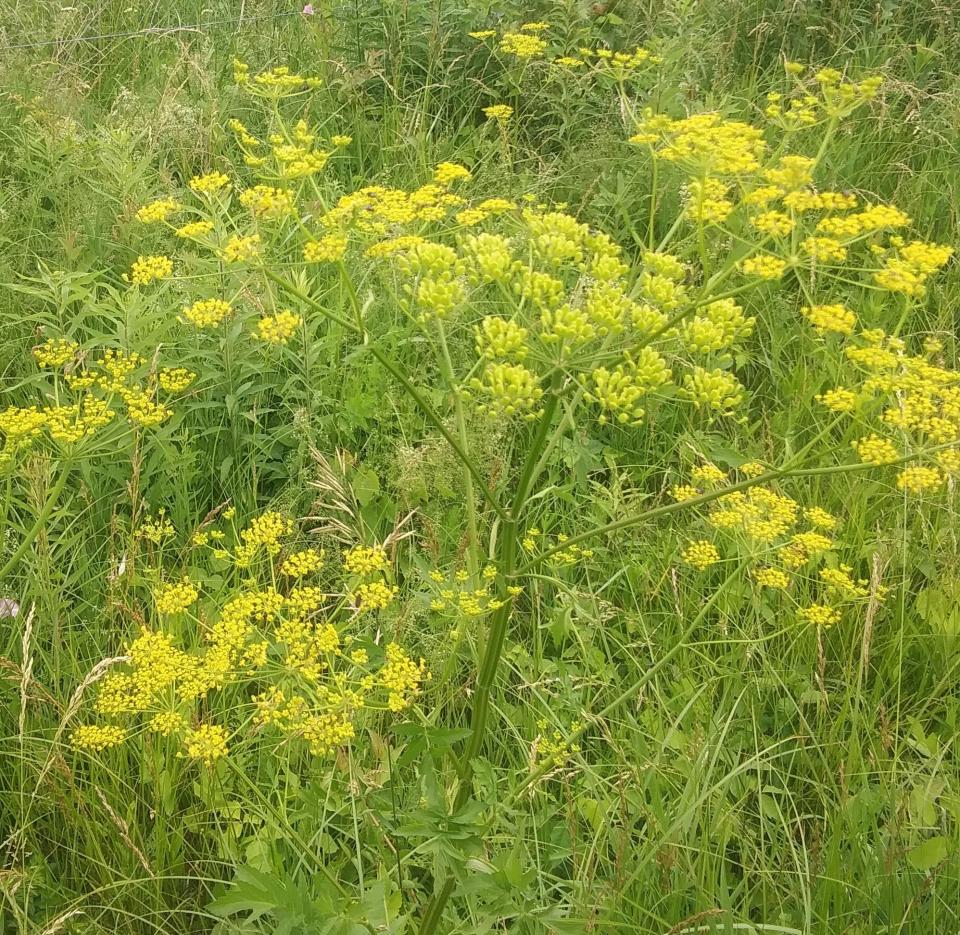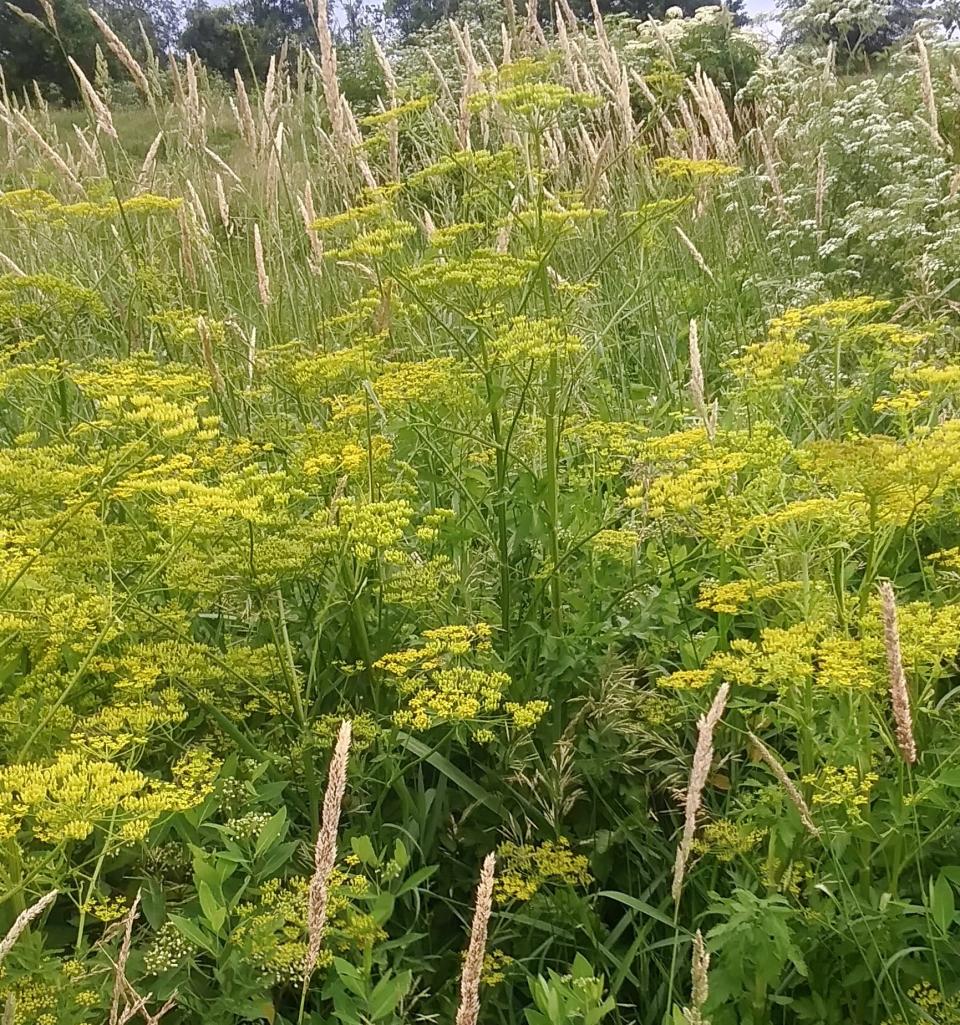A Stroll Through the Garden: Wild parsnips can be poisonous
This past week I had the honor to sit with Steve Hughes of WZLP on his radio program called “Kick’n Clods with Kermit.” I was the guest. Our topic was on invasive and poisonous plants, and we talked about this topic for almost an hour. All of you are welcome to join us on the third Thursday of the month at 7 a.m.

The reason for this program is that Steve asked me about the growth of wild parsnips, giant hogweed, and poison hemlock. As both of us have been driving in the country, we have noticed that the wild parsnips are becoming more numerous than the giant hogweed and poison hemlock. What I mentioned to Steve is that the fields, ditches, swamps and pastures are looking at being overwhelmed by these plants. Wild parsnips, or Pastinaca sativa, are native to Europe. They can produce 1,000 seeds per plant and can stay dormant without germinating for four years. This makes this weed all the more difficult to deal with on a normal basis.
All of the plants that I mentioned are photophytotoxic and will cause a serious rash called phytophotodermatitis when exposed to the skin. Furanocoumarins is the phototoxic chemical that causes the burn on your skin. What is fascinating is that this burn can stay sensitive for as long as two years. Put simply — if you get the liquid on your skin and expose your skin to sunlight, you will develop a rash. No matter what, wash this toxin off your skin as soon as possible. If you are unfortunate enough to get some in your eyes, you may lose your sight. Many members of the carrot family have this toxin in their stems and leaves. A cow’s skin and other livestock can also be affected by this toxin. These plants you do not want to treat too lightly.
Wild parsnip is a biennial — in other words, every two years this plant goes through its life cycle. Therefore, you will have blooms on this plant that will be productive only every other year. One of the ways that we can control this plant is by mowing. Make sure that you have tennis shoes and long pants and long sleeve shirt to mow. If you have these plants in your yard, you will have a better chance at controlling them if you mow or cut them down early.

I’m going to open a new window for you on what we have seen even as a noxious weed. Parsnips have for a long time been a root crop in Britain and across Europe. Keep in mind the tops are not used but the roots look like carrots — only a beige color similar to potato. This root crop has been baked, boiled, pureed, roasted, fried, grilled and steamed. Our parsnips are claimed to taste sweeter than carrots when cooked. In England the diversity of the use and the pleasant taste has qualified the parsnip to be elevated to an essential component of the Christmas dinner. Their diversity on how one could use this root crop is notable. One of my Christmas meals I enjoyed had parsnips as a component, and I have looked forward to seeing it on the menu in the future.
Parsnips should be included in your diet because you will find vitamins B1, B2, B3, B5, B6, B9, C, E and vitamin K, along with the minerals calcium, iron, magnesium, manganese, phosphate, potassium, sodium, and zinc. There are many types of enzymes and they contain antioxidants, anticancer, anti-inflammatory and anti-fungal qualities that are an important reason for even cultivating this plant.
I have seen my rose, coreopsis, yucca, geranium, yellow loosestrife, iris and more in bloom. Hope you have a great stroll through your own garden this week. If you see a challenge, drop me a line at ericlarson546@yahoo.com. Soon I shall put a blog link on my website and allow you to comment. My website is ohiohealthyfoodcooperative.org. Thank you for participating in our column.
Eric Larson of Jeromesville is a veteran landscaper and gardening enthusiast and a founding board member of the Ohio Chapter of Association of Professional Landscape Designers.
This article originally appeared on Mansfield News Journal: A Stroll Through the Garden: The invasive and poisonous wild parsnip

